How To Drive More Direct Reservations: Restaurant Marketing Tips for Groups
Elise Musumano
5 min read
Jul 24, 2018

Elise Musumano
5 min read
Jul 24, 2018

Consider this: A guest is on your restaurant’s marketing website.
She’s been told by a coworker about this great place called [your restaurant]. After browsing the menu, she’s ready to book a reservation.
But, it’s not that easy — because you don’t have availability.
When she gets an error notification, she leaves your site to search for a new restaurant.
End result: You lose the reservation, and your shot at winning the guest back relies on her remembering your restaurant and wanting to try again the future.
Below are three tools to prevent this from happening by removing reservation drop-off points.
Let’s say I’m on the Burger & Barrel website, searching for a reservation:
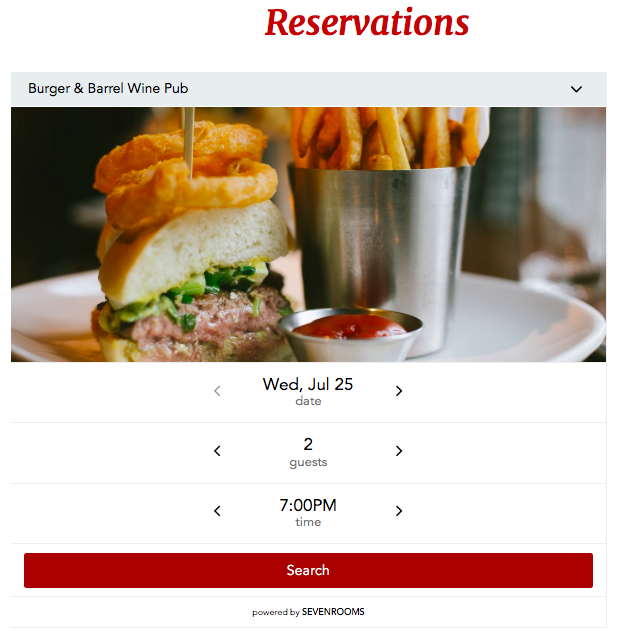
When I search, there’s no availability for the date, time, and party size I’m looking for.

But, it doesn’t have to be over. This is where restaurant marketing for groups hits its stride. The most innovative groups take what could be a dead end and use it to start a relationship with the guest.
Mercer Street Hospitality — the group that owns Burger & Barrel — has its reservations widget set up to cross-sell the same date, time, and party-size availability at each of its sister properties, also in NYC.
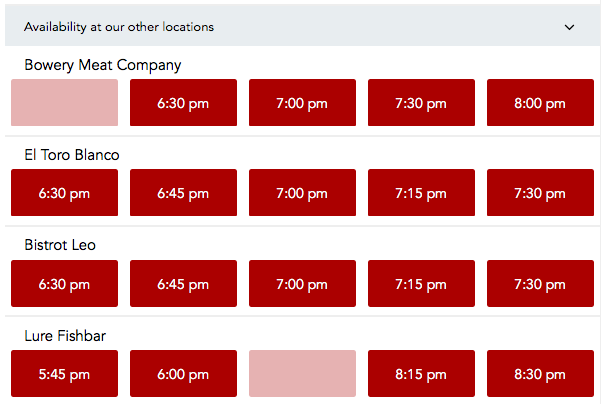
Not only that, but it surfaces same-time availability at the searched for restaurant over the entire week.
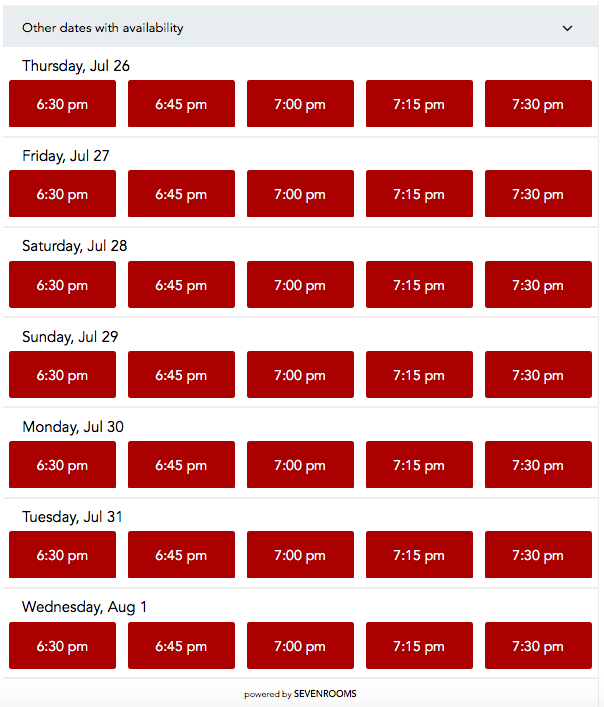
This gives the guest two new options for reservations, preventing drop-off and increasing booking conversions.
Learn more about how SevenRooms can set this up for your restaurant.
(If you’re a customer, contact your customer success manager on our team.)
In some cases, a guest ends up on your hospitality group’s website — not the restaurant’s.
And when this happens, 99% of groups push guests off their site to each restaurant.
Letting your guest go down the rabbit hole of one restaurant’s website risks a few possibilities:
That’s why it’s important to change this paradigm and pull your availability across all properties into one view for the guest.
Here’s how Seattle-based Fire & Vine Hospitality brings together availability from each of its locations into one place:
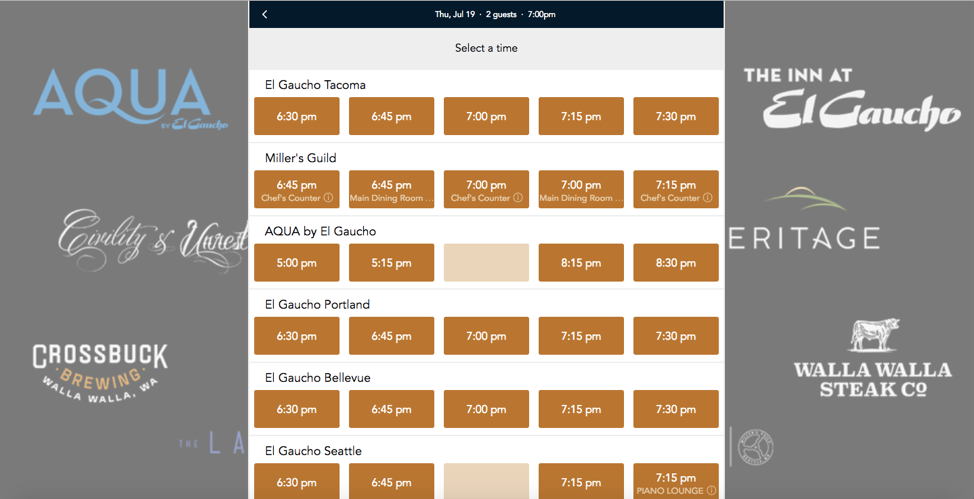
This widget is a great resource to link to from a “Reservations” call-to-action (CTA) button on your hospitality site’s homepage.
The end result: More availability and faster reservations for your guests. And you keep them focused on your group’s restaurant marketing.
Not a customer yet? Ask for a demo of SevenRooms
Just because you don’t have availability now doesn’t mean it won’t open in the future.
Today, one in five parties no-shows their reservation. Which means if you don’t overbook or have walk-ins, that table could end up sitting there, empty.
By adding request functionality to your reservation checkout, you gather contact for any reservations where there’s a higher demand for seats than an available supply.
Which means you can easily reach out to fill last-minute cancellations, and you can get a sense of overbooking demand by time of year, day of week, and shift.
What does that look like in real life? Let’s flip to the guest perspective.
Say I go to book a reservation at Cote in NYC; there’s no availability for the time I want.
In addition to being shown the closest available times, I can also submit a request:
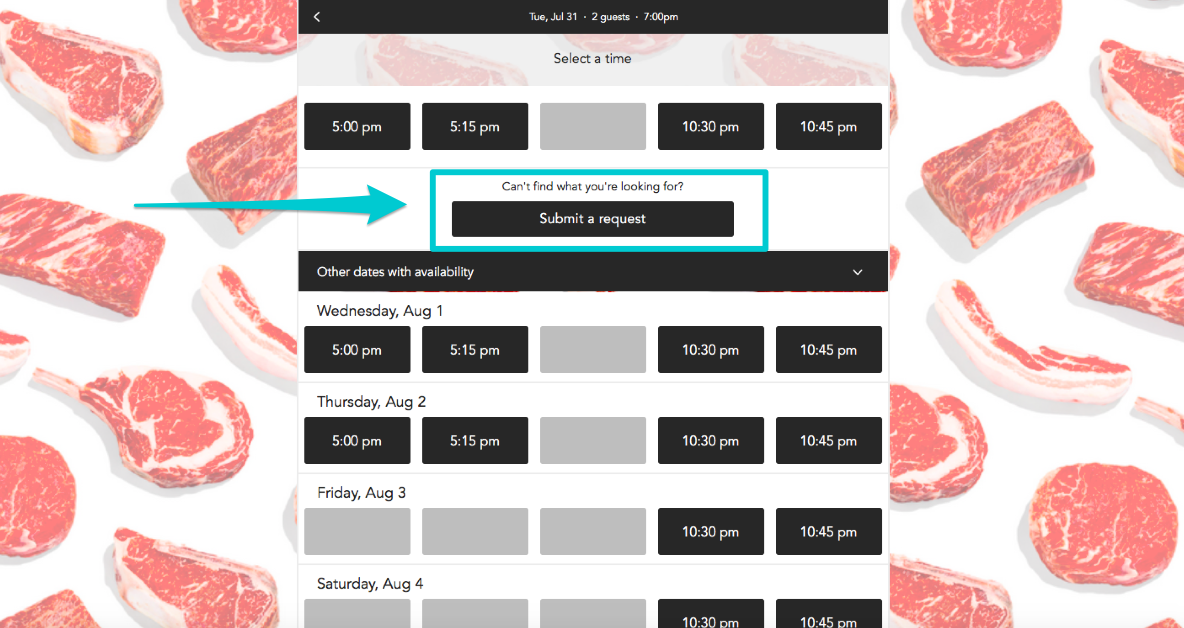
Want a reservations widget for your restaurant? Sign up for a free demo of SevenRooms.
When I click the button, I’m brought to a page that asks for my information:
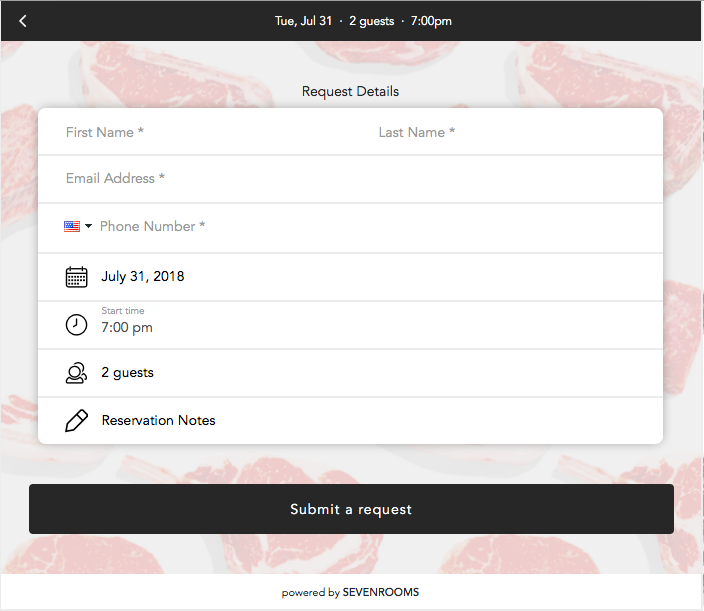
Capturing a guest’s contact information starts a relationship where you can:
On the restaurant end, here’s what a request queue looks like.
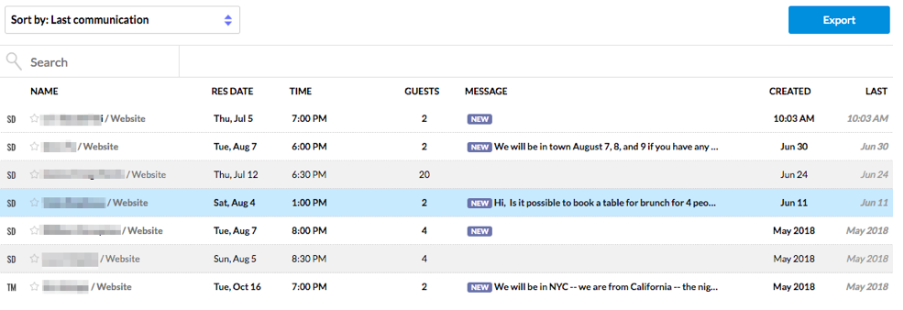
You can sort this report by request submission date, requested reservation date, or by the timing of the most recent communication anyone on your team has had with the guest.
You can also filter it down by:
See that blue button? You can export your filtered view at any time and use the download to send a marketing email or add it to an audience list for paid retargeting.
Interested in your own widget? Sign up for a free demo of SevenRooms.
If you have a team of reservationists, this one’s for you.
How are your reservationists finding availability at each of your restaurants?
If they’re opening up a new browser tab for each location, there’s no need to do that.
Using a tool like SevenRooms, they can choose which locations they want to search across, and have them side by side in the same screen:
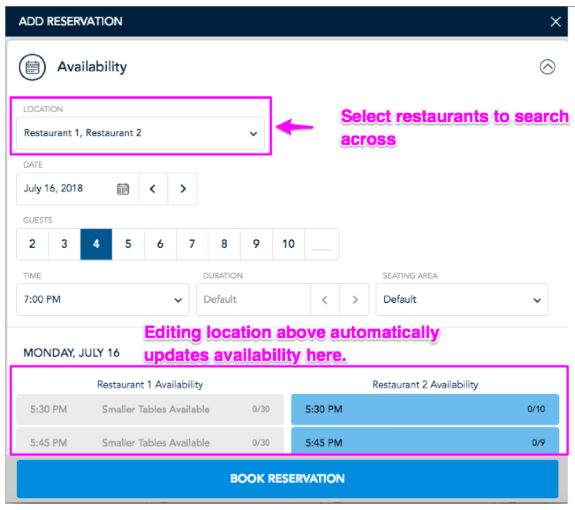
And they can search by date, time, and party size, and see any shift notes as they book.
That’s all for now! If you want to learn more about how SevenRooms works with customers like Burger & Barrel, Casa Mono, and other restaurants to book more reservations, check us out.